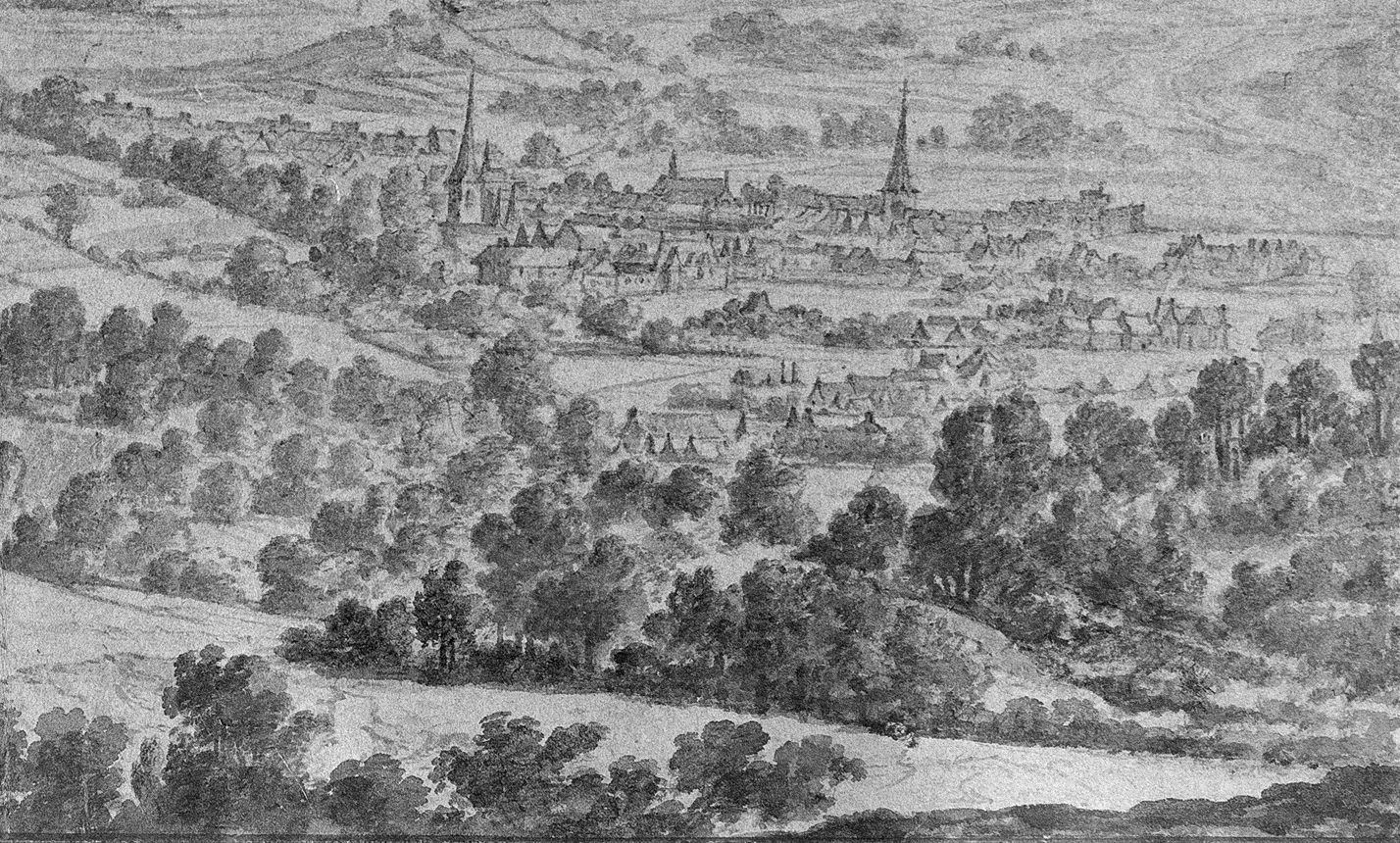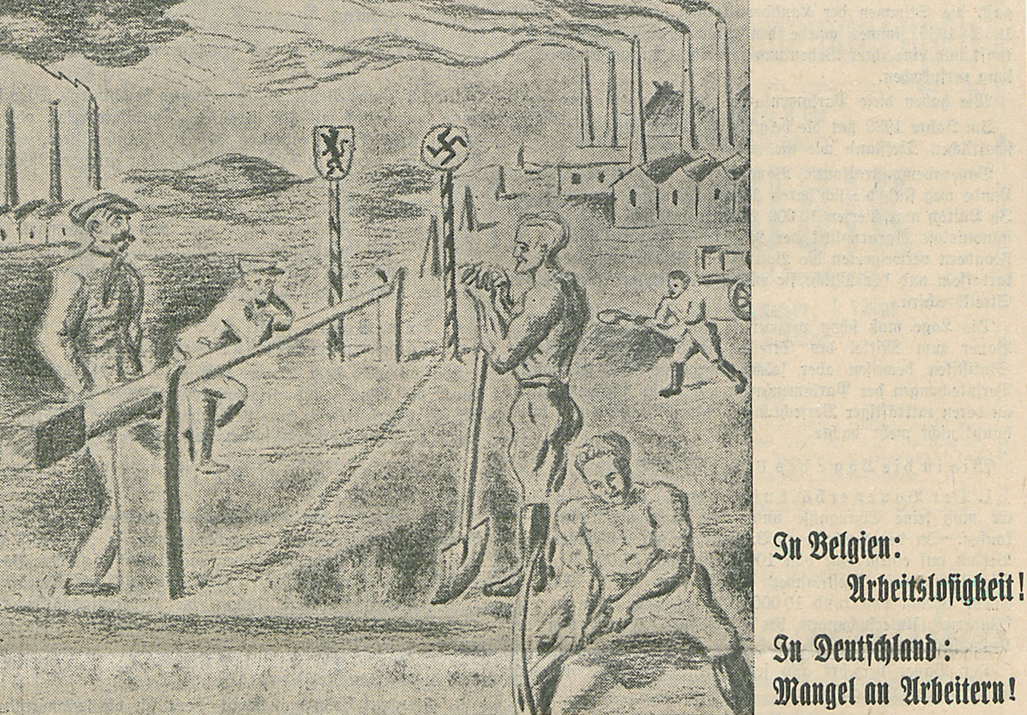The Eupener Nachrichten on 29 March 1939, shortly before the elections. On page two of the newspaper is a caricature, which is meant to create a mood in the election campaign.
What is depicted? The right-hand side of the picture depicts Germany. On the horizon, the chimneys of factories are smoking. In the foreground, we see workers. They are muscular and bursting with strength. A swastika stands for Germany and the economic organisation by National Socialism. On the left, we see the coat of arms of the Brabant Lion, representing the Belgian state. Leaning against the border barrier between the two countries, there are workers who obviously have nothing to do. Their posture is bent and they look dejected. A Belgian factory can be seen in the background. Its chimneys are not smoking. Next to the picture we read the description: ‘In Belgium: Unemployment! In Germany, lack of workers!’
What was the cartoonist getting at? He was, without doubt, a supporter of the Heimattreue Front. The Heimattreue Front was a party in Eupen-Malmedy-Sankt Vith that called for the annexation of the area to Germany. Reminder: as a result of the annexation of the Prussian districts of Eupen and Malmedy to Belgium in 1920, a revisionist movement had gradually developed in the region.
After the onset of the great economic crisis in 1931, the economic situation of Eupen-Malmedy-Sankt Vith played an increasingly important role in the revisionists’ arguments. The border population was able to observe the rapid economic recovery of Germany after the National Socialists came to power. Accordingly, the caricature was also intended to draw attention to this economic ascent of Germany: ‘Look here, while we are doing badly in Belgium at the moment, the German economy is flourishing!’ Indeed, Belgium’s economic situation in the 1930s was bleak. Not until at the end of the decade, and following tax hikes, emergency taxes, salary cuts and currency devaluations, did people in Belgium begin to see light at the end of the tunnel.
However, the caricature hides a lot: the German economy of the 1930s was credit-fuelled. The state invested horrendous sums in job creation measures, including the war economy, or prestige projects such as the still useless autobahns. Only a war could sustain this economic growth in the long run. As the historian Götz Aly also writes in his book Hitlers Beneficiaries (2007): ‘In their propaganda, the Nazi leaders boasted that they were laying the foundations for the thousand-year Reich; in everyday life, they did not know how to pay their bills the next morning’. It is the appeal of fascist regimes that this caricature brings to our attention, because that is also what caricatures are for: to falsify existing situations.

